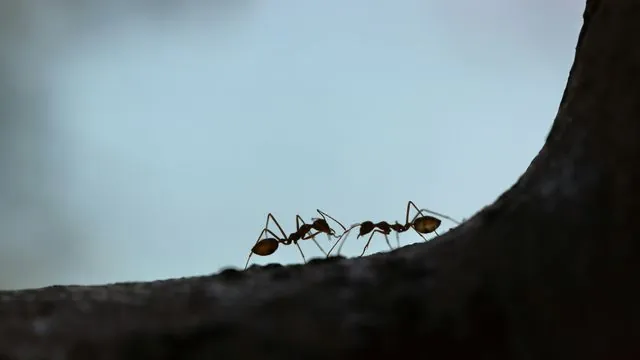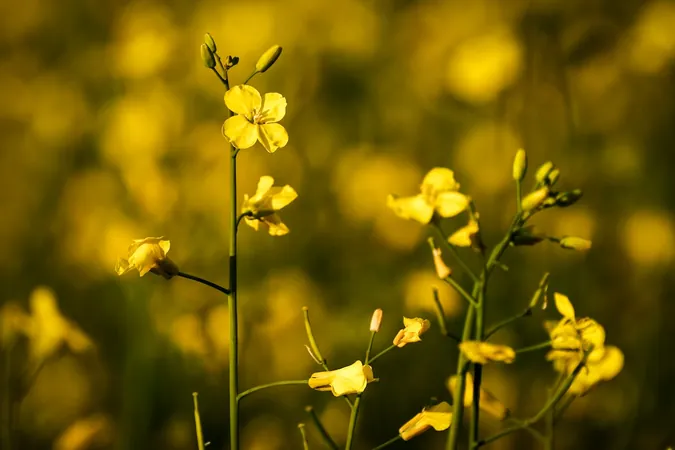
Incredible Discovery: Fiji's Unique Ant Plants Offer New Insights into Symbiotic Relationships
2025-07-15
Author: Jacques
Secrets of the Squamellaria Revealed!
A remarkable study conducted on the exotic Squamellaria plants in Fiji unveils a fascinating ecological secret: how different species of ants can thrive together without annihilating each other. These peculiar plants, found on a remote Pacific island, feature a unique design that keeps hostile neighbors at bay!
Compartmentalization: Nature's Ingenious Solution
Research from Washington University in St. Louis and Durham University highlights a clever design by the Squamellaria — separate chambers within their enlarging tubers. Each ant species resides in its own isolated segment, preventing potential clashes that could arise from competing for resources. This innovative arrangement allows the plant to host multiple ant colonies while maximizing its nutrient intake.
Insights from the Field: A Game-Changer in Ecological Research
Lead researcher Guillaume Chomicki emphasizes, "The real surprise came from realizing that these compartments evolved not for the sake of the ants, but for the plant's own survival. More ants mean more nutrients for the Squamellaria!" This revelation reshapes our understanding of mutualistic relationships where one partner's gain does not lead to the other's demise.
Deadly Ant Conflicts Unveiled in Experiments
The study, published in the prestigious journal Science, detailed experiments that showcased the fierce battles that erupt when the walls separating ant colonies are removed. In these high-stakes confrontations, ant workers fought to the death, illuminating the potential for conflict in environments where multiple species share resources.
A Visual Breakthrough: CT Scanning the Squamellaria's Domatia
Employing advanced computed-tomography scanning allowed researchers to create 3D models of the plant's structure, revealing previously hidden compartments. Susanne Renner, the study's senior author, noted, "It was through this innovative technology that we truly grasped how the Squamellaria manages to separate its ant tenants effectively."
Uncovering Ecological Dynamics: A Major Evolutionary Strategy
The findings not only showcase the Squamellaria’s unique adaptation strategies but also shed light on broader ecological dynamics. "This study exemplifies a critical evolutionary strategy: compartmentalization that enables a single host to benefit from various symbiotic relationships," Renner added.
The Bigger Picture: Lessons from Nature's Design
With its unique adaptations, the Squamellaria serves as a key example in understanding the complex interplay of species interactions. This research opens up new avenues for ecological study, demonstrating that mutualism can thrive under certain conditions, and challenges us to explore how other species might also exploit similar strategies to coexist.









 Brasil (PT)
Brasil (PT)
 Canada (EN)
Canada (EN)
 Chile (ES)
Chile (ES)
 Česko (CS)
Česko (CS)
 대한민국 (KO)
대한민국 (KO)
 España (ES)
España (ES)
 France (FR)
France (FR)
 Hong Kong (EN)
Hong Kong (EN)
 Italia (IT)
Italia (IT)
 日本 (JA)
日本 (JA)
 Magyarország (HU)
Magyarország (HU)
 Norge (NO)
Norge (NO)
 Polska (PL)
Polska (PL)
 Schweiz (DE)
Schweiz (DE)
 Singapore (EN)
Singapore (EN)
 Sverige (SV)
Sverige (SV)
 Suomi (FI)
Suomi (FI)
 Türkiye (TR)
Türkiye (TR)
 الإمارات العربية المتحدة (AR)
الإمارات العربية المتحدة (AR)